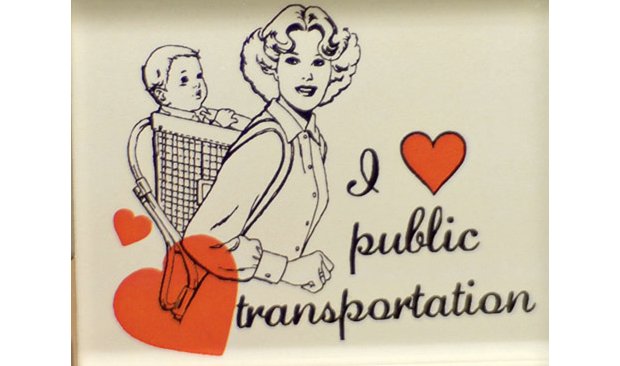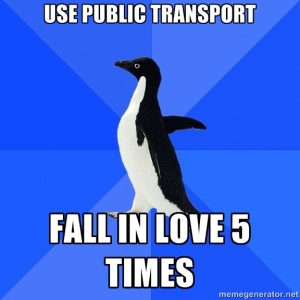Transport is often the third largest item of expenditure for a household. It is on average between 10-15% of the household budget, surpassed only by food and shelter. But it can be higher for low- and middle-income households.
Transport is also essential for participation in society. Accessing education, employment, goods, services, and even voting can require some degree of travel.
For these reasons, transport policy can be a powerful tool for improving (or hindering) social equity.
For the past half century transport planning has focussed on increasing vehicular mobility, with the aim of increasing access. However, there is a fundamental and usually unacknowledged tension between increasing mobility and increasing access. Travelling more and further does not always provide people with greater access – quite the opposite.
By prioritising the movement of cars and trucks and building our towns and cities around storing cars, we unintentionally decreased access by every other means of travel. We made it more dangerous and unpleasant to walk and cycle even short distances, and more difficult to provide effective public transport because we unintentionally provided incentives for development to go further away. Instead of having a butcher, baker and little hardware store within walking distance of most homes, supermarkets and big box retail are places most people need to drive to. Large retailers get some cost savings with this model and can provide a greater selection of goods that seem cheaper, but the centralisation has externalised the transport costs. We all pay more to get there, and everywhere else we need to go.
We tend to think that the places we need to go are fixed, and that it’s the job of government to provide infrastructure to access those places. But that is only one side of the equation. The infrastructure and planning rules we put in place also influence how development happens, and where people and businesses locate.
Back in the early part of the 20th century, New Zealand was full of walking and transit communities. Towns set up near water or train lines, and near industry. When electric trams were laid all over the Auckland isthmus (and in many other cities) neighbourhood centres naturally set up around the tram stops. Houses and apartments were built within walking distance of stops, which were surrounded by shops – the butcher, the baker, the shoe shop, the grocer, etc. You can still see the old bones of the tramlines in older neighbourhoods (e.g. Sandringham, Mount Eden, along Dominion and Ponsonby Roads).
No one needed a car because everywhere you needed to go was accessible by tram, train, ferry or foot, or some combination thereof. People spent about the same about of time commuting (or less) than they do now. It wasn’t perfect, but it was integrated, it cost us less, and it happened without planning rules.
In the late 1950’s we ripped up the tramlines to make way for cars, and we started requiring all new buildings to provide large off-street car parks – massively reducing the density of development, while also pushing new development further out to where land was cheaper. Gutting communities for motorways and widening arterial roads reduced the attractiveness of being in the city, and drove those who could afford it to quiet green suburbs full of houses, where a car is necessary to get anywhere.
Car dependence excludes a whole lot of people who are unable to drive, because of age, income or disability. It also imposes huge costs on low-income households, a phenomenon called transport poverty or forced vehicle ownership. Approximately 1 out of 3 New Zealanders can’t drive or access a car directly, even though we have the second highest rate of car ownership in the world.
Reducing car dependence is therefore critical to increase the opportunities for everyone to participate in society, and to reduce the cost burden on low- and middle-income households. And this doesn’t simply mean replacing all our current car journeys with public transport.
We need to transition back to a pattern of development that increases access, and to some extent decreases the distances we need to travel. This is not impossible, in fact, it can happen quite easily with the right policies and price signals. But we need to focus on affordability and social housing in places that are location efficient.
I will be following up on this post over the next week to discuss the best way of increasing access with public transport fare policies. To be continued….







Give serious consideration to extending the Gold Card (ie excluding rush-hour) to all beneficiaries. Apart from the obvious advantages this also has most impact in cities, where most people live and where transport problems are worst.
It means beneficiaries will feel less forced to run cheap (though not really) relatively unsafe cars.
It also pushes up demand for public transport, increasing real jobs, again in places most people live.
How many of these “working poor” will have over $200,000 in retirement savings by the time they are 65 ? The forced car ownership in outer suburbs is reducing their capacity to save, and is likely to lead to a larger pension liability for future governments.
Social housing is often built where land is cheap, but households must run multiple cars to access services and employment. Those in State housing don’t seem to place a high value on the large backyards they are provided with. Is it not better to cluster the social housing together at densities sufficient to provide access to services within walking distance ? While Melbourne’s Housing Commission towers built in inner Melbourne in the 1960’s have some undesirable features, they are in high demand because of their access to services within walking distance.
Take a big box retailer that services 10,000 houses with each house being an average 2 kilometres away and spends an hours shopping. Now, this means to get the weekly shopping there’s 20,000km traveled each week and 10,000 hours used. What happens when we rationalise it?
All orders made online
1000 people hired to deliver the orders delivering to 10 houses each
Deliveries made at a specific time and day of the week
Takes, being really generous, an hour and half to deliver the full 10
The average distance for each delivery stays about the same at 2km
Total distance for delivery would be 2000k – only 10% of the distance traveled saving huge amounts of fuel. Time savings are 8500 hours. I haven’t even changed the transport systems to get those savings. The only change needed was for the store to become a distribution point instead.
The rational thing to do would be free-delivery as it saves the community massive amounts of resources but that won’t happen under the present system as delivery is used as a way to make even more profit.
Our present socio-economic system, known as capitalism, is the most inefficient way to organise the use of our precious, limited, resources.
The tension between vehicular mobility and access, in this article, reminds me of the Martinez paradox, which is a tension between the availability of physical goods and the range of people who are entitled in principle to them.
Martinez was the Nicaraguan economy minister under the Sandanista government. He witnessed a transition between full supermarkets that almost nobody could afford to shop in and empty supermarkets with everyone entitled in principle.
Comments are closed.